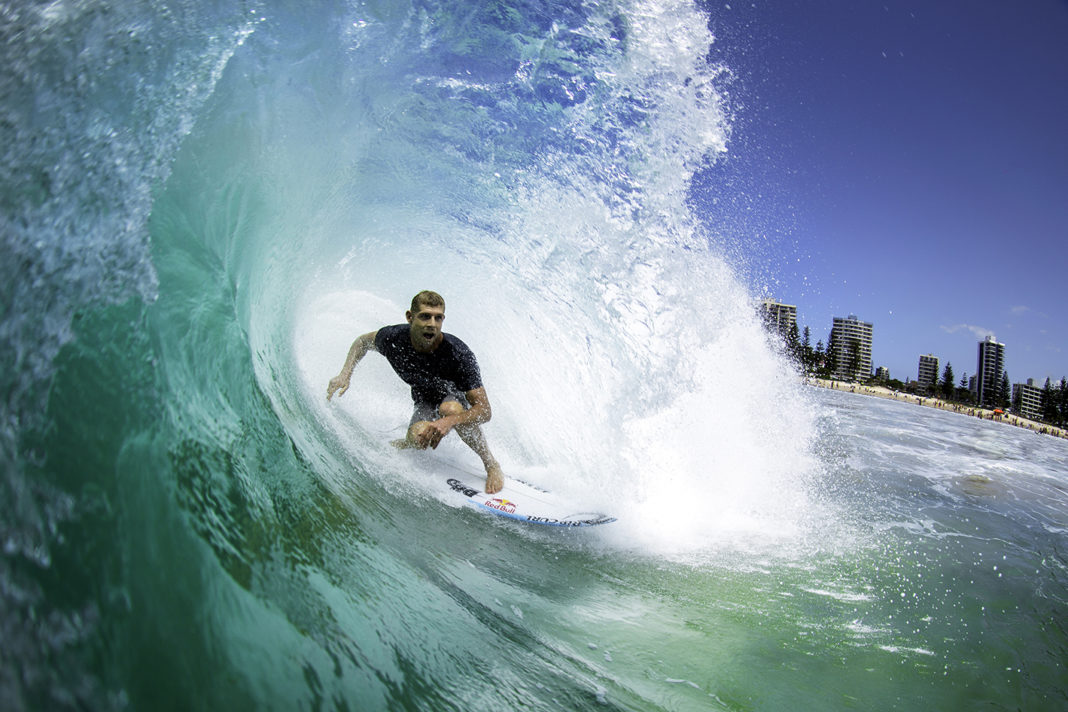BEAT THE SWEEP
Remember it is you against the will of the ocean, without the apparatus of a surfboard to get you out of trouble – you need to watch the current. I couldn’t stress this more. A quick survey of the tide before you head out can be a lifesaver too. Check for rips and strong currents, and any other abnormalities (including rocks, reef, groins etc.) that might make life tough for you out there. Trust your intuition — it’s not weak to turn your back on a spot that you feel might be out of your depth. With experience, your time will come.
KEEP IT SIMPLE TO START
Check your settings before you swim out. Make it easy on yourself; you don’t want to be fiddling with settings while you juggle staying afloat and balancing your camera. Keep the settings simple: single shot autofocus drive, aperture priority with a large depth of field (f8 or larger), ISO 800 or above (to keep your shutter speed fast) and a full battery.
SHOW RESPECT
Just like Mother Nature, respect not only has to be shown to the conditions, but other fellow surf goers as well. Surf etiquette rules apply, which means it’s your responsibility to get out of the way of board riders and to be aware of your surroundings to make the ocean a safe place for all.
BE CREATIVE
Nothing can be more disheartening than coming out of the water after a big day of shooting to find that all your images have the same point of view and
framing. Don’t be afraid to experiment once you build up some comfort. You don’t
need to stick to the same spot and framing each time either. Even if it doesn’t work out every time, you might just nail that one killer shot you’ve been gunning for!
ACCESSORISE
A must-have for any surf photographer is pair of fins. Buy them or borrow them, but just try not to leave them at home! They’ll become your best friends; fins help you get into the best positions in the water, and they assist in battling against the strength of the ocean. Also, this tip may seem a bit commonsensical to some, but during the colder months it is wise to invest in a wetsuit. The right one will shift your focus from how chilly you are, and allow you to focus on the job at hand.
PLAN AHEAD
Do your research when it comes to surf locations. Have a peek at your favourite surf checker the night before to get a handle on the swell and wind forecasts. Tides also play a big part in how each spot works, so give yourself a couple of back-up options before you jet off in the morning. A bit of local knowledge can definitely come in handy here!
AIM FOR GOLDEN HOUR
In simple terms, understanding light and harnessing it to your advantage can be the difference between a good shot, and a great shot. Pay close attention to its position throughout the day and how you can use it creatively within your environment. Front lighting can look completely different to subjects that are backlit. As a general rule, shooting at dusk and dawn can give you a beautiful, soft golden light that will illuminate your subject in a natural way. In summary, water surf photography is all about having the right gear, knowing the conditions, and being in the right place at the right time. Whether you’re shooting solo or working with a surfer for hook-ups, when getting started, make sure to keep your camera settings simple. Don’t forget to mix things up with your framing and composition. Go for diversity in your shots, look for colour and unique points of view.
Let’s not forget safety too – respect the ocean and the surfers around you. Above all, have fun with it! Figure out what works for you and practice, practice, practice! I hope you find these tips handy the next time you hit the water – see you out there!
For all you photography needs head to www.camerapro.com.au



